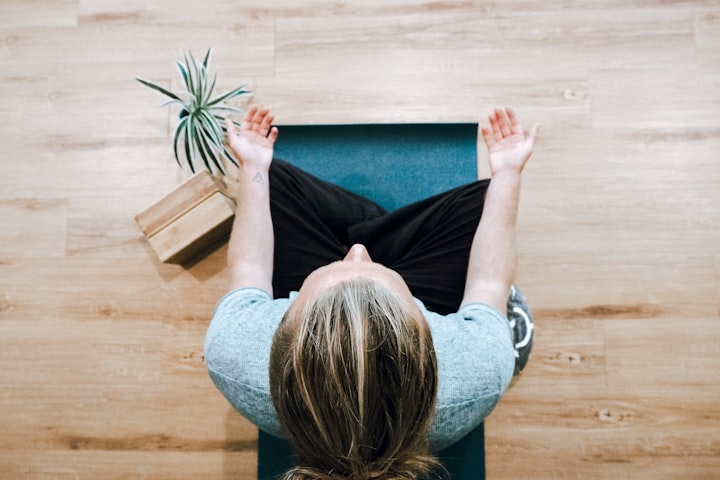The Art of Mindfulness
Exploring the Benefits and Techniques of Meditation

In today's fast-paced and digitally driven world, finding moments of stillness and inner peace can be a challenge. The constant bombardment of information, distractions, and stressors can leave us feeling overwhelmed and disconnected from ourselves. It is in this context that the practice of mindfulness and meditation has gained significant attention and popularity. In this article, we will delve into the art of mindfulness, exploring its benefits and various meditation techniques.
What is Mindfulness?
At its core, mindfulness is the practice of bringing one's attention and awareness to the present moment. It involves intentionally and non-judgmentally observing our thoughts, feelings, bodily sensations, and the surrounding environment. Rather than being caught up in the past or worrying about the future, mindfulness allows us to fully engage with and appreciate the present.
The Benefits of Mindfulness
Numerous scientific studies have highlighted the positive effects of mindfulness on our mental, emotional, and physical well-being. Let's explore some of the key benefits:
Stress Reduction: Mindfulness has been shown to reduce stress levels by promoting relaxation and helping individuals develop a more balanced perspective towards challenging situations. By focusing on the present moment, we can alleviate anxiety and worry associated with the past or future.
Improved Mental Clarity and Focus: Regular mindfulness practice enhances our ability to concentrate and sustain attention. It cultivates mental clarity, enabling us to better manage distractions and improve productivity.
Emotional Regulation: Mindfulness helps us develop emotional resilience and self-awareness. By observing our thoughts and emotions without judgment, we can better understand our reactions and choose more skillful responses in difficult situations.
Increased Compassion and Empathy: Mindfulness cultivates a sense of connectedness and empathy towards ourselves and others. It promotes kindness, compassion, and understanding, fostering healthier relationships and a more compassionate society.
Physical Well-being: Research has demonstrated that mindfulness can have positive effects on physical health. It can lower blood pressure, improve sleep quality, boost the immune system, and reduce the severity of chronic pain.
Techniques of Meditation
Meditation is one of the key practices through which mindfulness is cultivated. While there are various meditation techniques, let's explore a few common ones:
Mindful Breathing: Find a quiet space and sit comfortably. Focus your attention on your breath, noticing the sensation of each inhale and exhale. Whenever your mind wanders, gently bring it back to the breath. Start with a few minutes and gradually increase the duration.
Body Scan Meditation: Lie down or sit in a relaxed position. Close your eyes and systematically scan your body from head to toe, paying attention to any sensations or areas of tension. Release any tension you notice and bring a gentle awareness to each part of your body.
Loving-Kindness Meditation: Begin by directing kind and compassionate thoughts toward yourself. Repeat phrases such as "May I be happy, may I be healthy, may I live with ease." Gradually extend these wishes to loved ones, acquaintances, and even those with whom you have difficulties.
Walking Meditation: Find a quiet path or space and walk slowly, paying attention to the sensations in your body with each step. Focus on the movement of your feet, the feeling of the ground beneath you, and the surrounding environment. Allow your attention to remain in the present moment as you walk.
Incorporating Mindfulness into Daily Life
While dedicated meditation sessions are valuable, the true power of mindfulness lies in its integration into our daily lives. Here are some practical ways to incorporate mindfulness into your routine:
Mindful Eating: Pay attention to the taste, texture, and aroma of your food. Eat slowly and savor each bite. Notice the sensations in your body as you nourish yourself.
Mindful Listening: Practice active listening by fully engaging with the person speaking. Give them your undivided attention, without interrupting or preparing your response in advance.
Mindful Movement: Engage in physical activities such as yoga, tai chi, or simply taking a mindful walk. Connect with your body's sensations and movements as you engage in these activities.
Mindful Technology Use: Set aside dedicated time to disconnect from digital devices and engage in activities that nourish your mind and body. Practice being fully present with loved ones or engage in a hobby that brings you joy.
Conclusion
The art of mindfulness and meditation offers us a powerful tool to navigate the challenges of our modern lives. By cultivating present-moment awareness and developing a non-judgmental attitude, we can experience increased well-being, reduced stress, and enhanced clarity of mind. Remember that mindfulness is a skill that improves with practice, so start small and be patient with yourself. Embrace the art of mindfulness, and allow it to transform your life one present moment at a time.





Comments
There are no comments for this story
Be the first to respond and start the conversation.